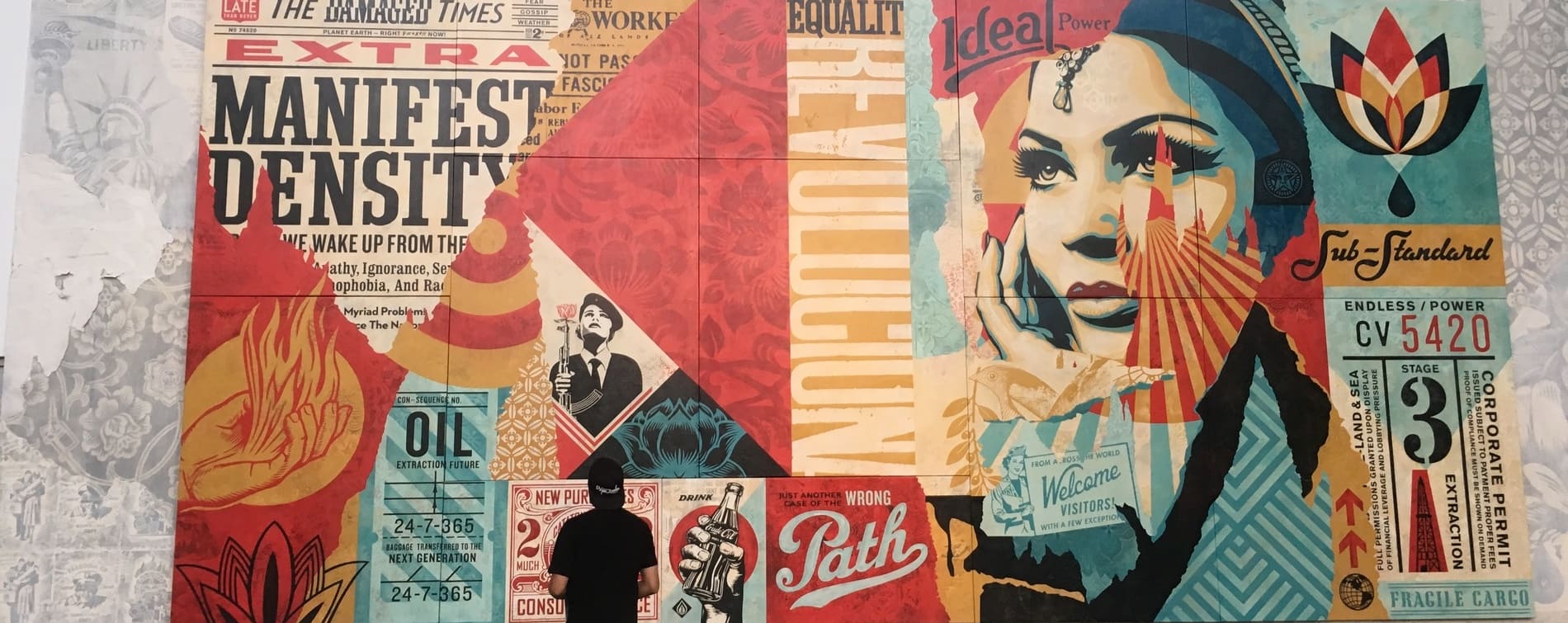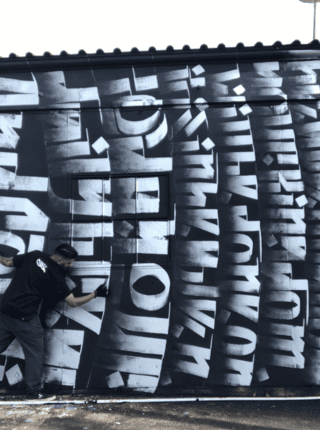If you’ve ever walked down a city street and found yourself staring in awe at a massive, colorful painting covering an entire building wall, you’ve likely witnessed the power and beauty of a mural. In this blog post, we’ll explore what murals are, their history, and their purpose.
A mural serves as a powerful medium for self-expression, allowing artists to unleash their creativity by painting walls, ceilings, or floors. It can be created on both indoor and outdoor surfaces and can range in size from a small design to a massive painting covering an entire building. The purpose of a mural is to transform and elevate private or public spaces, serve as a medium for political or social commentary, or memorialize historical events.
As a calligraffiti muralist in Orange County, CA, I’ve been fortunate to witness firsthand the transformative power of murals in urban spaces. Murals have the ability to beautify public and private spaces, serve as a medium for political or social commentary, and memorialize historical events. They can transform otherwise plain building walls and streets into vibrant, dynamic spaces that are a joy to experience.
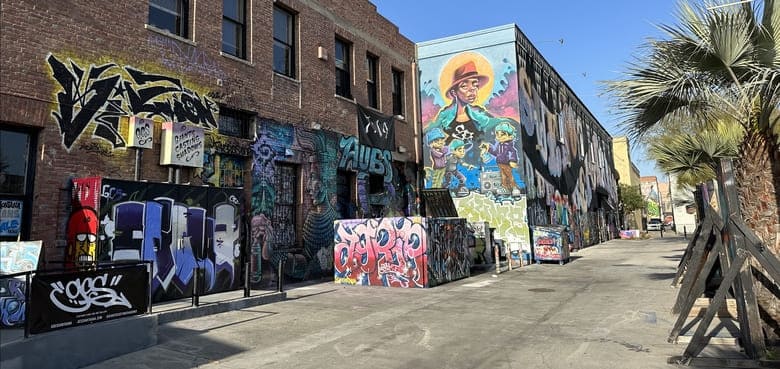 Graffiti murals in Downtown Santa Ana in front of GCS
Graffiti murals in Downtown Santa Ana in front of GCSAs we dive deeper into the world of murals, we’ll also answer some common questions, such as “What is the purpose of a mural?” and “Can you put a mural in your house?” By the end of this post, you’ll have a better understanding of what murals are and their importance as a form of public art.
History of Murals
Murals have been around for thousands of years and can be found in various cultures throughout history. The earliest known murals are the cave paintings found in Lascaux, France, dating back to around 15,000 BCE. These paintings depicted animals and hunting scenes and were created using natural pigments and charcoal.
In ancient Egypt, murals were used to decorate tombs and temples. The tomb of Nebamun, dating back to around 1350 BCE, features some of the most famous murals of ancient Egypt. These murals depicted scenes of daily life, hunting, and religious ceremonies.
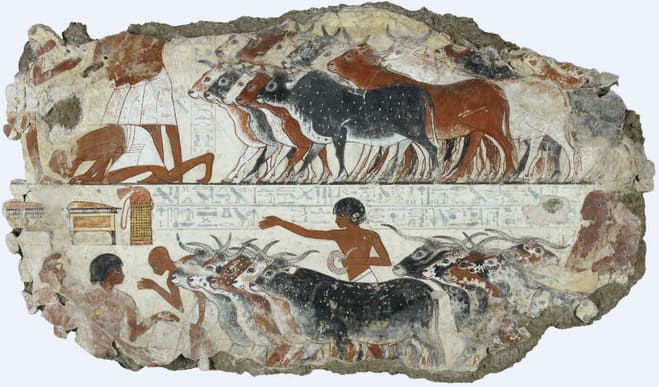
Image credit: The British Museum, Tomb of Nebamun Murals
During the Renaissance, murals became a popular form of art in Italy, with famous artists like Michelangelo and Raphael creating large-scale works in churches and public buildings.
In the 20th century, murals became a means of political and social commentary, with the Mexican Muralist Movement being one of the most notable examples. Artists like Diego Rivera, David Alfaro Siqueiros, and José Clemente Orozco created murals that depicted the struggles of the Mexican people and their history.
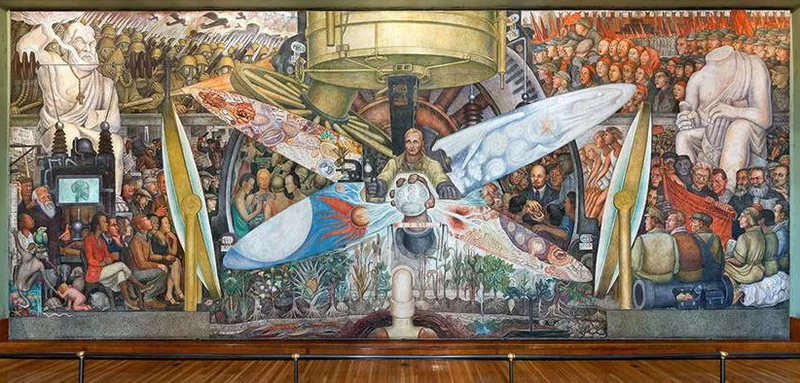
Image credit NPR.org, Diego Rivera “Man Controller of the Universe”
Today, murals can be found all over the world, in both urban and rural areas. They continue to serve as a powerful form of public art, allowing artists to express themselves while also beautifying and transforming public spaces.
What is the Purpose of a Mural?
The purpose of a mural can vary depending on the context and intention of the artist or commissioning party. Traditionally, murals were intended to beautify public or private spaces. By adding color and beauty to otherwise plain walls and streets, murals can transform a public space and create a sense of community pride.
In addition to their aesthetic function, murals can also serve as a medium for social or political commentary. Many artists use their murals to address issues such as inequality, discrimination, and environmental concerns. By creating a dialogue about these issues, murals can bring awareness and spark change.
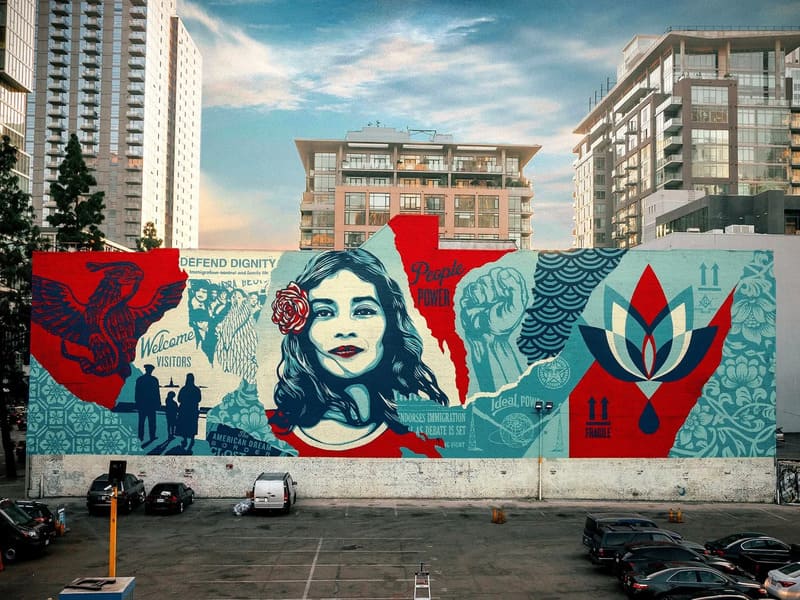
Image credit: Jon Furlong, “Defend Dignity” by Shepard Fairey
Murals can also be used to memorialize historical events or people. For example, murals have been painted to commemorate the lives lost in tragic events or to honor influential figures in a community’s history.
In some cases, murals can be used to attract tourism and boost a local economy. By transforming a neighborhood or building into an art destination, murals can draw in visitors and encourage the growth of local businesses.
Can You Put a Mural in Your House?
If you’re wondering whether you can have a mural in your home, the answer is a resounding “yes!” Murals aren’t just for public spaces anymore. In fact, having a mural in your home can add a unique and personal touch to your living space that is sure to impress visitors.
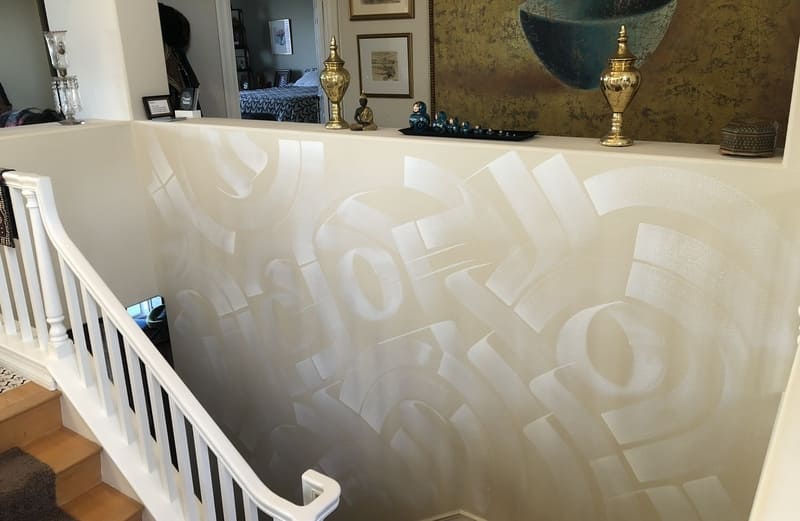
Accent wall mural in Irvine, CA
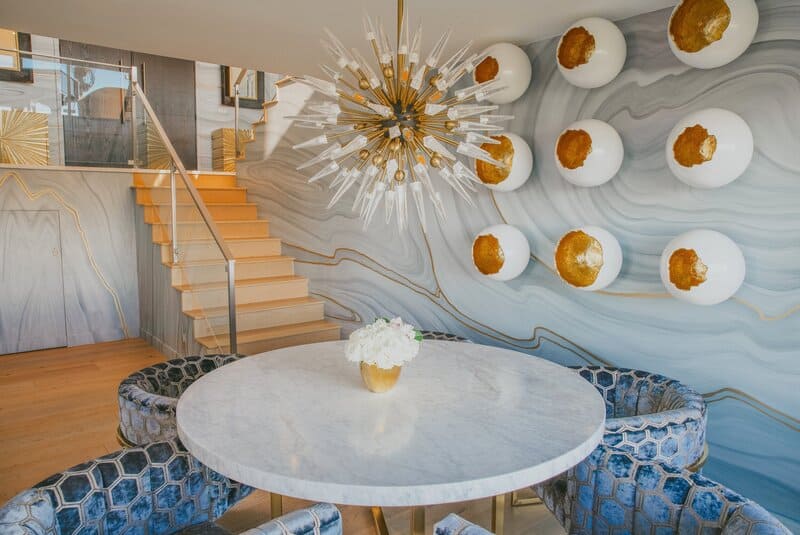
Image credit: Nichole Blackburn, Mural at a private home located in Bel Air, Los Angeles, California
Of course, there are some things to consider before you start planning your home mural project. The first thing you’ll need is wall space. Murals can be quite large, so you’ll need a wall that is both big enough and sturdy enough to support your artwork. Keep in mind that the wall will need to be prepped and primed before the mural can be painted.
The next thing to consider is your budget. Depending on the size and complexity of the mural, it can be quite expensive. However, a mural is a one-of-a-kind piece of art that can add significant value to your home. It’s also a great way to support local artists and their work.
Adding a mural to your home is a great way to express your personal style and add a unique touch to your living space. With the right wall space, budget, and artist, you can transform your home into a work of art.
Embracing Murals: Enhancing Spaces and Fostering Community
Murals are a form of art that have been used throughout history to beautify public and private spaces, serve as a medium for political or social commentary, and memorialize historical events. From ancient cave paintings to the murals of the Mexican Muralist Movement, murals have played a significant role in shaping our cultural and historical landscape.
Having a mural in your home is a great way to add a unique and personal touch to your living space. By finding the right wall space, budget, and artist, you can transform your home into a work of art. Additionally, appreciating and engaging with murals in your own community can enrich your experience of public spaces and foster a sense of community pride.


